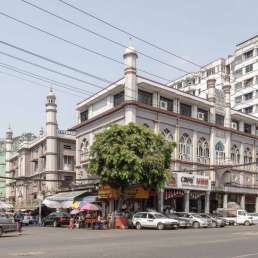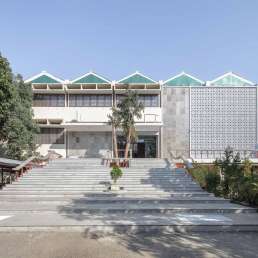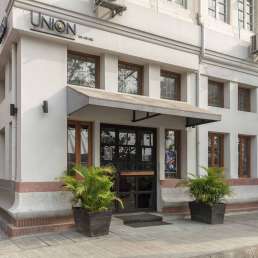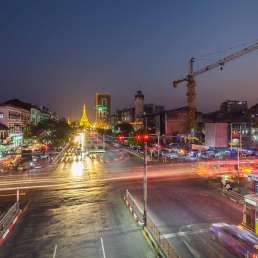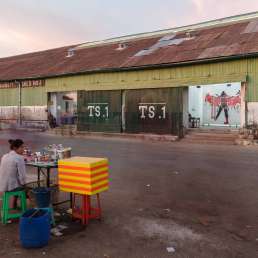Address: Shwedagon Pagoda Road
Year built: 1925
Architect: Unknown
As one of the last buildings in his career, U Kyaw Min’s homage to Daw Aung San Suu Kyi’s mother speaks a more postmodern language than his adjacent Thakin Kodaw Hmaing Mausoleum. And yet the two stand side by side in harmony. The open design here provides an interesting interplay between space and mass.
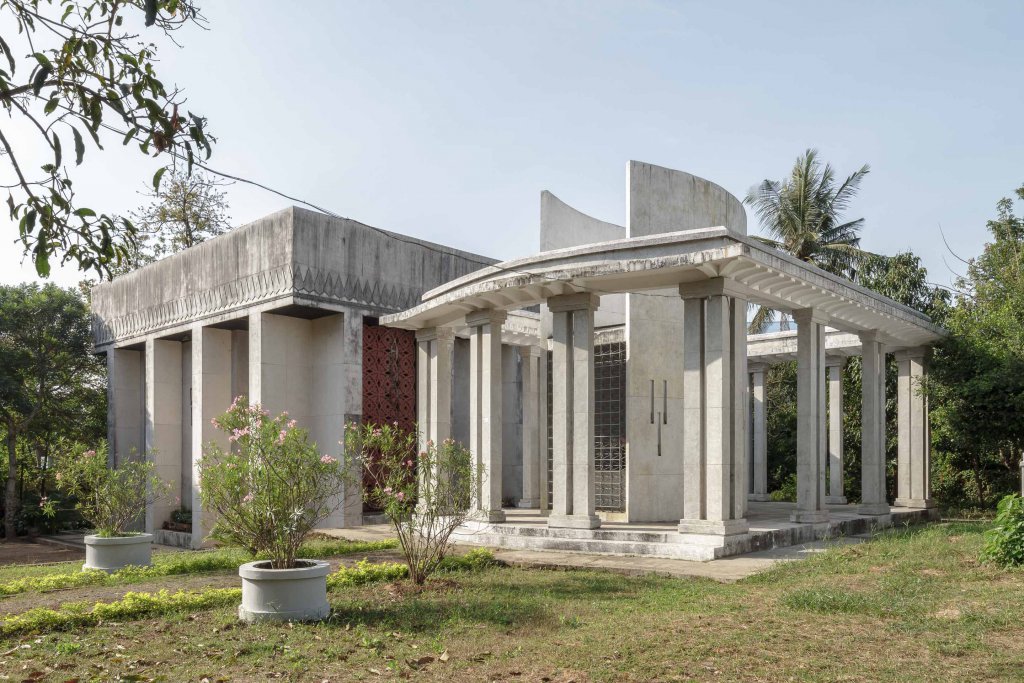
Daw Khin Kyi (1912–1988) met General Aung San in 1942, when she was working as a nurse in the Yangon General Hospital. After her husband’s death, followed by Burmese independence, she was elected MP for Lanmadaw township in Yangon and later became Minister for Social Welfare. While prime minister from 1958 to 1960, Ne Win laid the foundations for his eventual takeover in 1962. He was, for example, concerned about opponents with a strong symbolic aura who could one day challenge him. Aung San’s widow was such a figure. He therefore appointed her as ambassador to India in 1960 to remove her from the domestic political scene.
Previously, General Aung San and Nehru were united by their roles in their countries’ struggles for independence. They met several times but their last encounter, in Delhi in 1947, is the most well-known. “Panditji”, as Aung San’s daughter used to call Nehru affectionately, gave the young general warm winter clothes and some advice before his crucial trip to London where Burmese independence was eventually negotiated. When Khin Yi was posted to India, Nehru’s office arranged for her accommodation at 24 Akbar Road, which soon became known as Burma House. Later this bungalow, designed by famous architect Edwin Lutyens, would become the headquarters of the Indian National Congress. Daw Khin Kyi returned to Rangoon in 1967, to her house on University Road. After a long illness, which prompted Aung San Suu Kyi’s fateful return to Burma, she passed away in 1988. Her funeral in early 1989 was attended by more than 100,000 people. It was a pivotal moment in the country’s dramatic and continuing struggle for democracy.
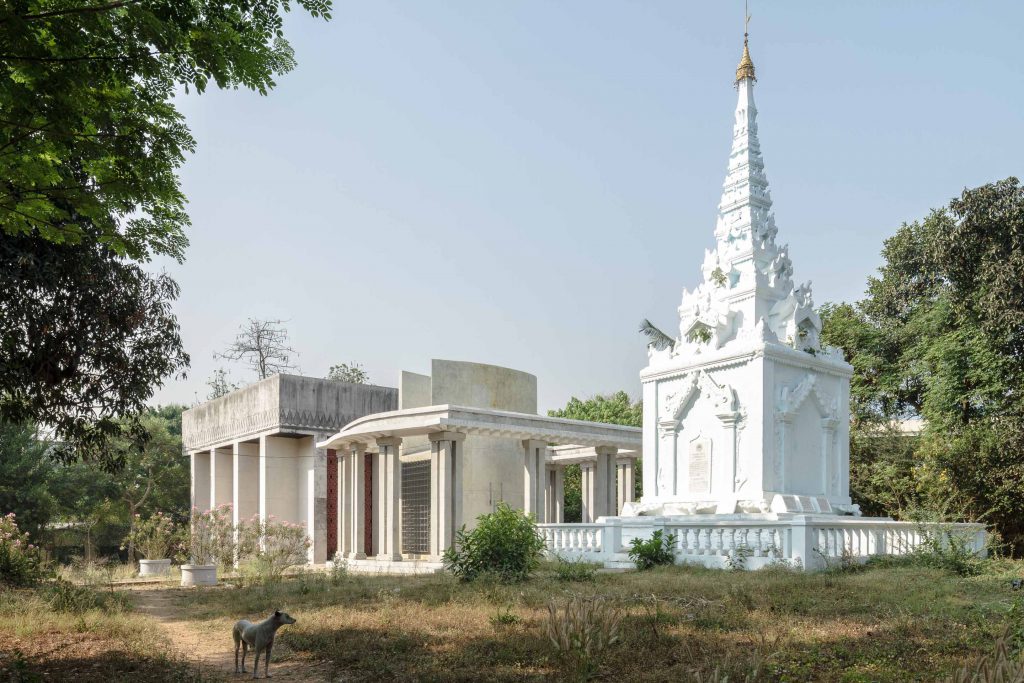
In the 1990 elections, architect U Kyaw Min stood as a member of the opposition National League for Democracy and won his seat in the West Bassein constituency. When SLORC dismissed the results U Kyaw Min, who had already been imprisoned in the late 1960s and early 1970s, was put behind bars once again. In the inhumane conditions of the country’s notorious prisons (of which Insein Prison is the most well known), he contracted a liver disease which plagued him until his death in 1999, shortly after his release.
